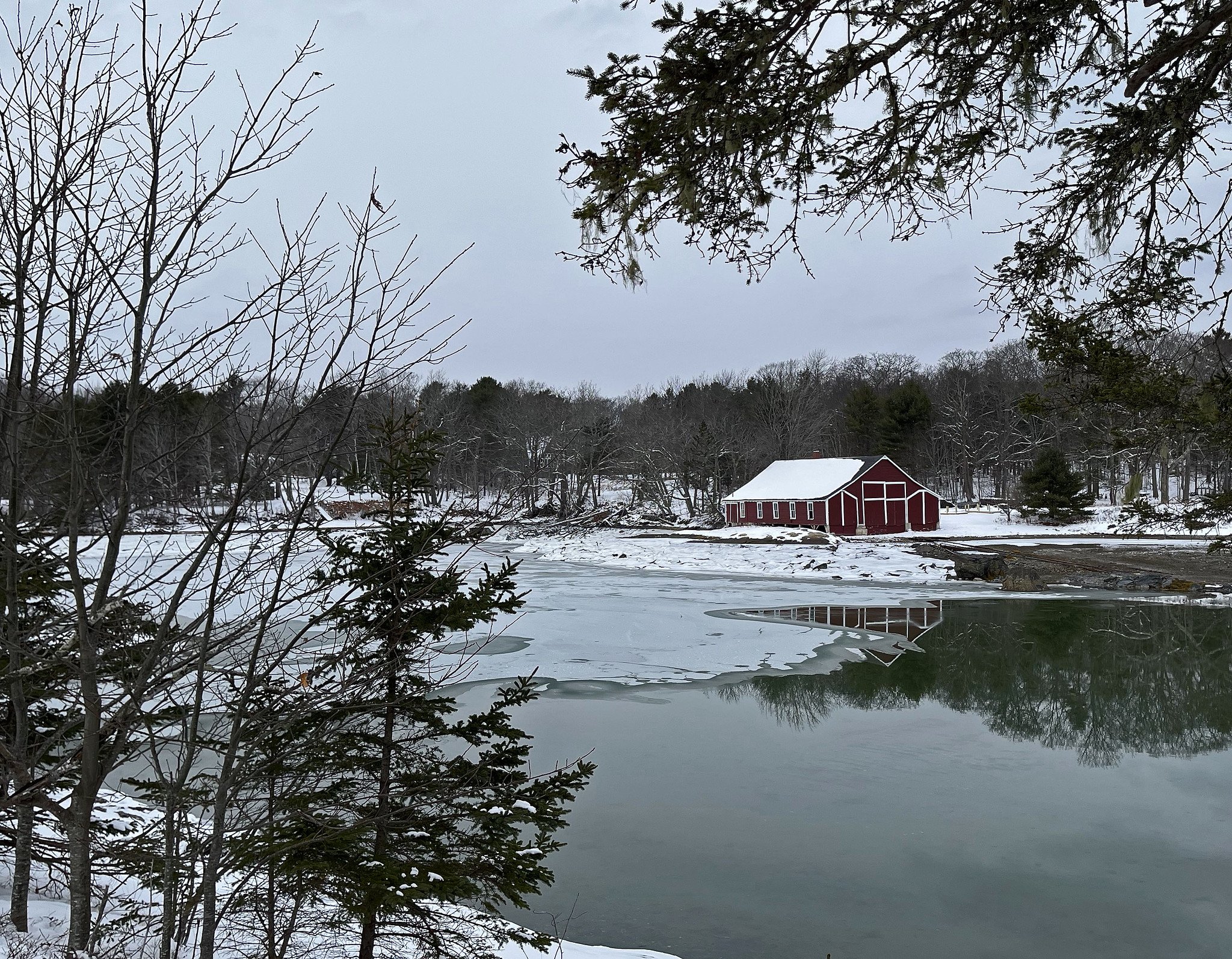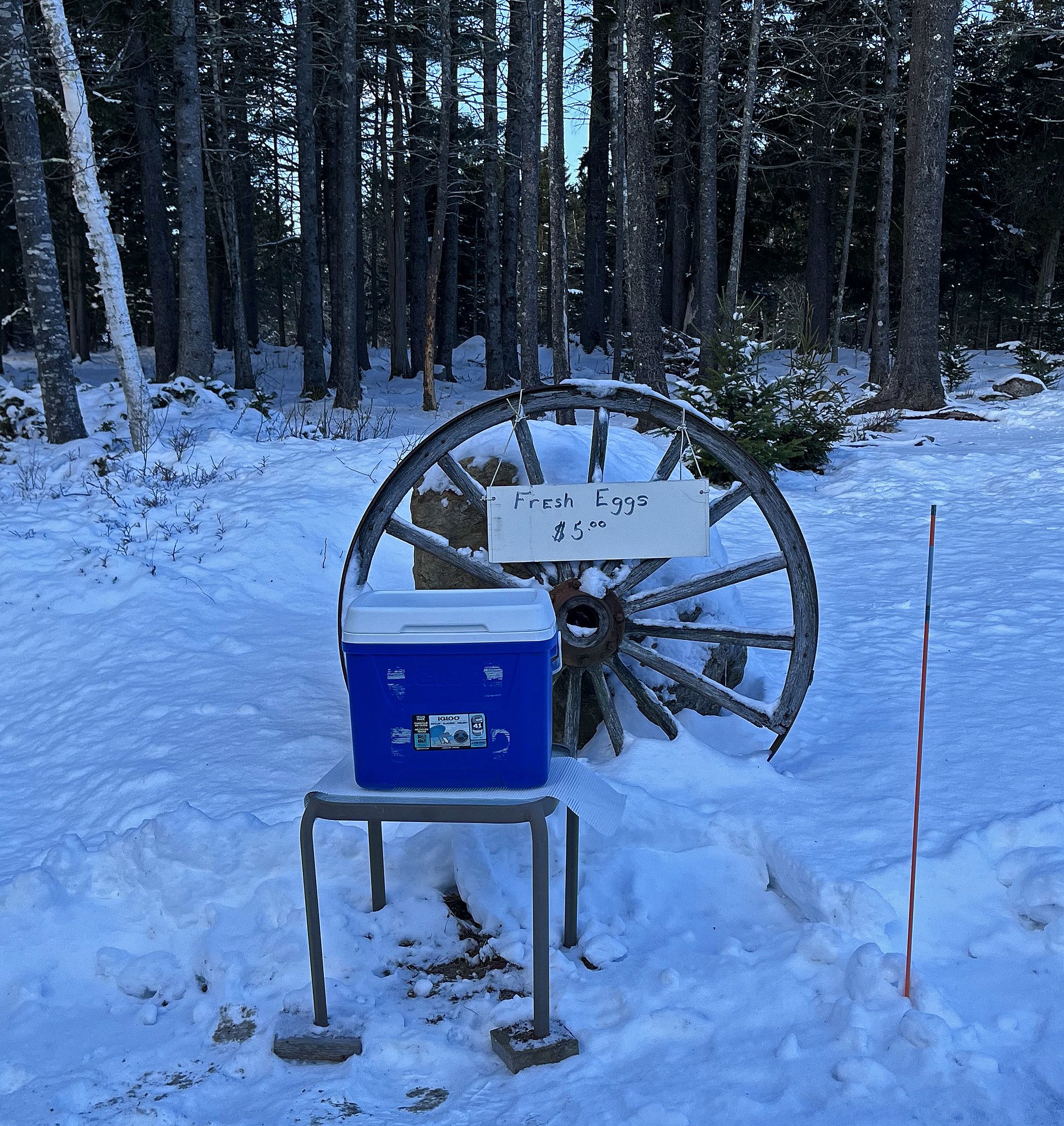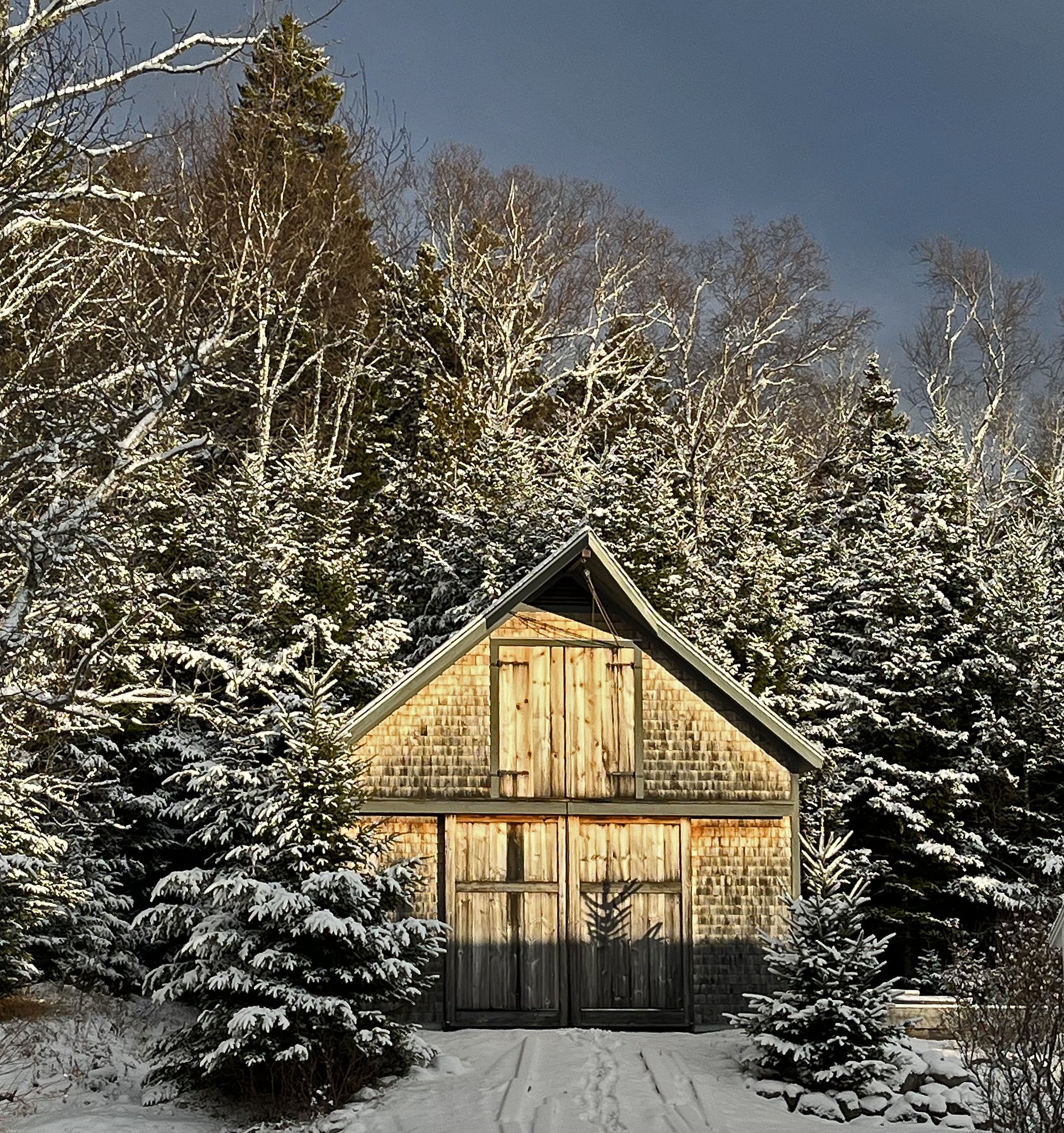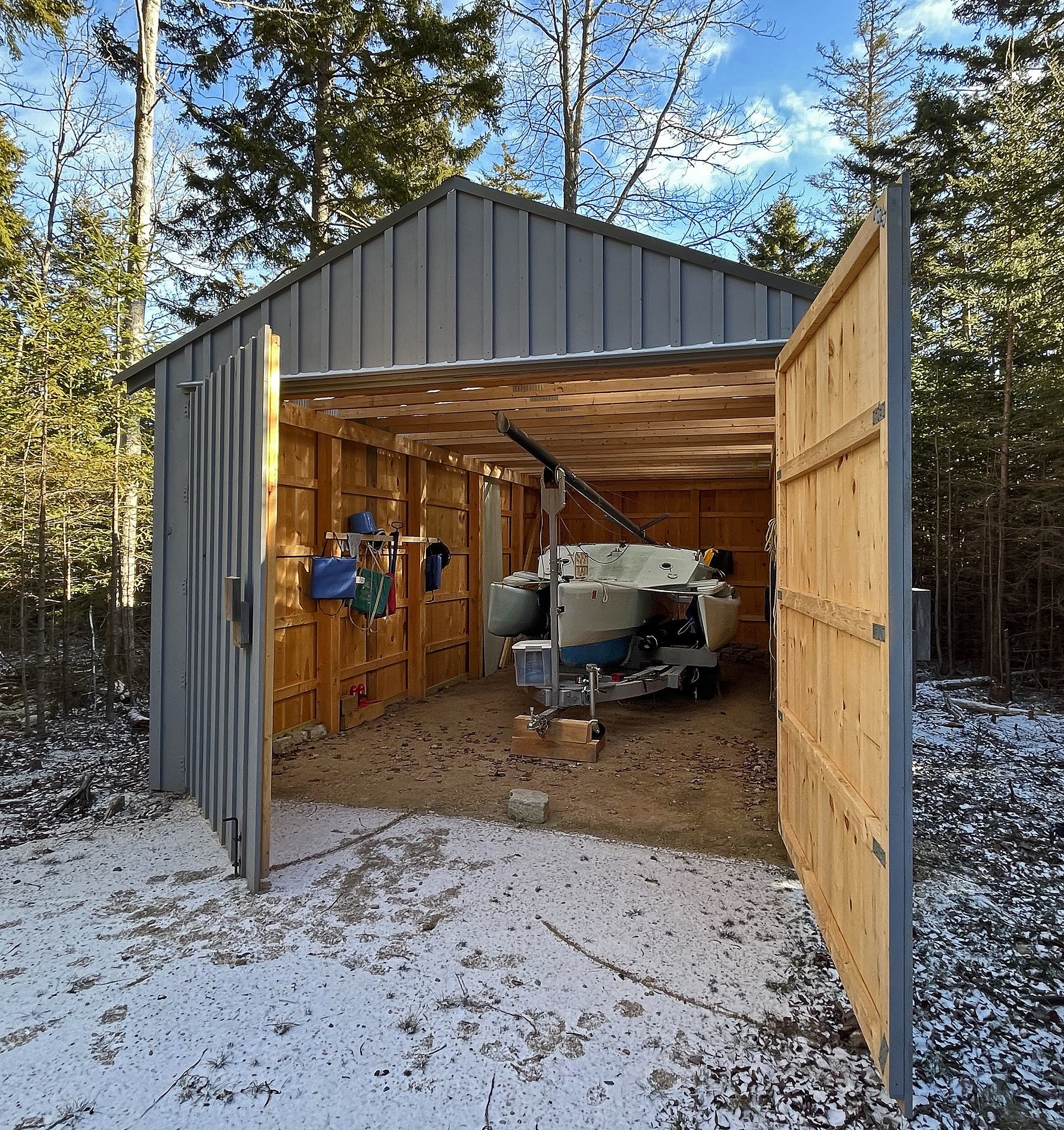January is the month of Janus, the Roman god of beginnings and transitions, the god of the end of the old year and the beginning of the new one. This year, January’s seasonal transition here on the Maine coast was seamless and even lovely at times. It stood in stark contrast to troubling times elsewhere.
We hope that a few postcard-quality images that share Down East Maine’s good fortune will offer a bit of relief to those who need it. As with many postcards, these are meant to carry with them the friendly message to some of you of “We wish you were here” and, to others, the message of “We’re glad you’re here.”
We begin as usual with our monthly record images of the western mountains of Mount Desert Island, as seen across Blue Hill and Jericho Bays from Brooklin’s Amen Ridge; then, there is the harbor house on Harbor Island, which protects Naskeag Harbor; followed by Blue Hill and Blue Hill Bay’s sea ice being erupted by a rising tide, and, finally, the landmark red boat house in Conary Cove on a dramatically dark and icy winter’s day:
January here was punctuated by several polite snowstorms and freezes that caused little damage, but created visual delights that helped protect against the winter “blahs”:
As usual, the country lanes and rural roads here were beautified by January’s snowfalls and quickly plowed with little diminishment in their beauty:
Of course, the bright suns of January that follow its dusky snows allow us to see familiar landmarks and everyday objects in a different, almost purified, way:
One of the more intriguing games that can be played in January is guessing what the smaller sheds and shacks — the winter storage structures — contain; it’s not always obvious:
Winter wildlife sightings in January include shy white-tailed deer bucks that have survived the hunting season, yearlings that frolic openly, and their mothers who pose in their new, thick winter coats. Meanwhile, increasing numbers of over-wintering robins frantically invade the winterberry bushes and pick them bare during the month, while our resident take-things-as-they-come herring gulls often huddle and nap without complaint on cold days.
While our seagulls huddle, some of our more adventurous fishermen go out on the cold waters and “drag” (with a dredge) for Atlantic scallops or dive in scuba equipment to the sea bottom to hand-harvest them. Some also dive for Atlantic sea urchins. For dragging, lobster boats are equipped with masts and booms that control the dredge; they also usually are temporarily equipped with protective shelling huts behind the cabin. The smaller urchin diving boats also often are equipped with temporary shelling huts, but no masts and booms.
Finally. we come to the January skies, where the cold air has less moisture and dust to blur our vision. The sun’s lower angle in relation to us in January this year provided several spectacular “blue hours” (which often last only minutes) and many glorious sunsets. There also were some fascinating views of January’s “Wolf Moon” phases, including a good number of “morning moons” that lasted well after daybreak.
(All images in this post were taken in Down East Maine during January of 2025.)














































































































































